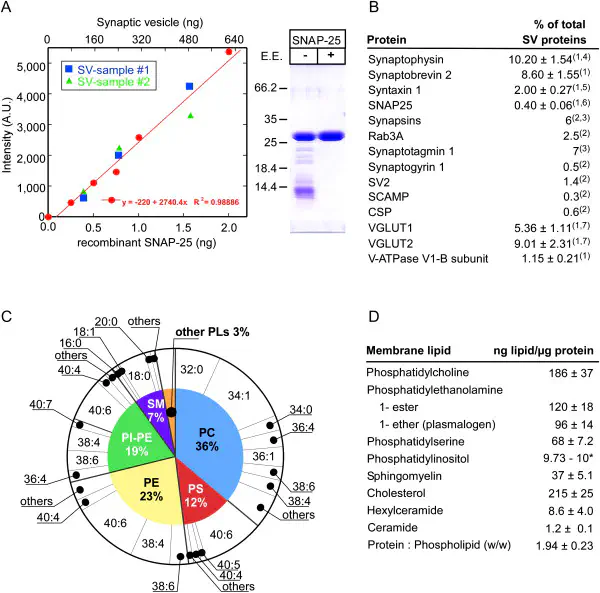
Abstract
Membrane traffic in eukaryotic cells involves transport of vesicles that bud from a donor compartment and fuse with an acceptor compartment. Common principles of budding and fusion have emerged, and many of the proteins involved in these events are now known. However, a detailed picture of an entire trafficking organelle is not yet available. Using synaptic vesicles as a model, we have now determined the protein and lipid composition; measured vesicle size, density, and mass; calculated the average protein and lipid mass per vesicle; and determined the copy number of more than a dozen major constituents. A model has been constructed that integrates all quantitative data and includes structural models of abundant proteins. Synaptic vesicles are dominated by proteins, possess a surprising diversity of trafficking proteins, and, with the exception of the V-ATPase that is present in only one to two copies, contain numerous copies of proteins essential for membrane traffic and neurotransmitter uptake.